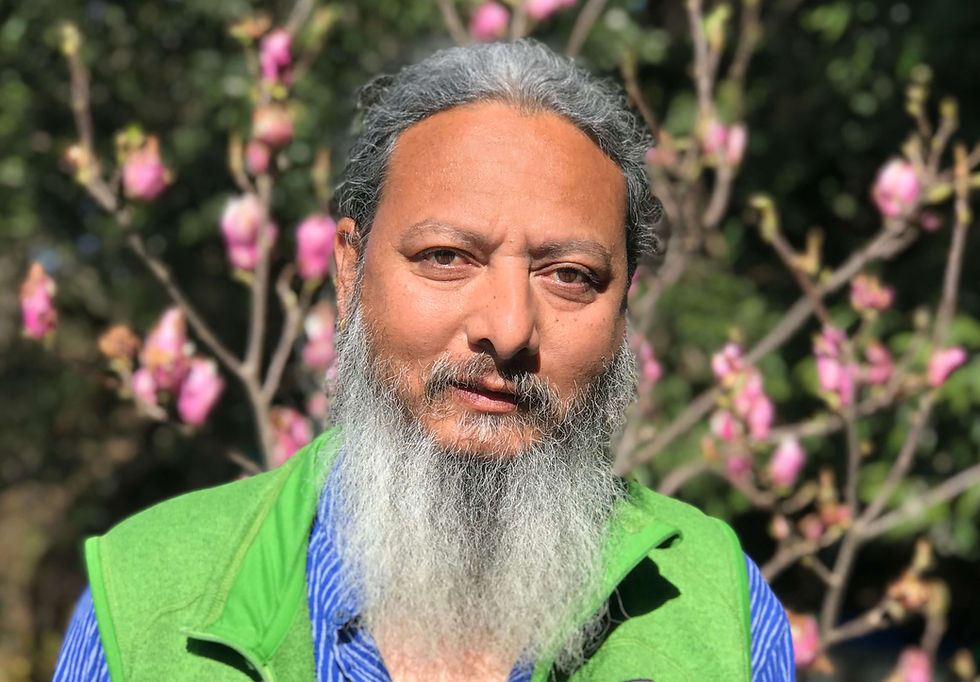Book Talk: Walking with the Great Apes
- torczonasha
- Feb 17, 2023
- 4 min read

The word “science” has been socially imbued with insinuations of rigorous experimentation, in which men in white coats conduct systematic, precise, and replicable studies. While there is no denying the incredible strides that humanity has made as a result of this standardization and highly academic culture, there is another side of science equally valuable in expanding our knowledge of the natural world, yet utterly distinct in its aim and execution. In her combined biography of the renowned “Trimates,” Sy Montgomery reveals the scientific insight that can be gained from patience and perseverance, while exploring the undefinable bonds that Jane Goodall, Dian Fossey, and Biruté Galdikas had with the primates they studied. Her methodical, poetic account is underpinned by the science and writing accomplishments of Montgomery herself, an esteemed naturalist guided by the compassion that animals teach us.
The story of the unexpected scientific journeys for these three women began with Louis Leakey, an English anthropologist who sought to find “traces of early man” in his own birthplace of Kenya. Almost infamous among more conventional academic circles for his “wild hypotheses” and explorer-esque bravado, Leakey was driven forth into the relentless scientific pursuit by philosophical ponderings that still bear significance today: “Who am I? What made me what I am?” Although he originally gained distinction for discovering fossils attributed to the ancestors of Homo sapiens, Leakey was unsatisfied with the information he found from “bones and stones,” and, in an decision characteristic of the erratic figure, he proposed longitudinal studies of humanity’s closest relatives - the great apes.
Many were skeptical when Leakey appointed a young, female secretary to study a species of primate who had previously remained evasive in their natural environment. Yet Jane Goodall, now arguably the most famous living scientist, proved her inimitable value as a primatologist and anthropologist through an approach so distinctly in contradiction with scientific norms. As Montgomery narrates the tale of Jane’s quest to understand this species so similar to our own, it is clear that Jane, unlike previous scientists studying chimps, did not see the animals as a stepping stone to human advancement. She “asked only that the chimpanzees admit her silent presence into their lives.” This forfeit of control managed to accomplish what others could not: decades of interaction with chimpanzees and massive leaps in human understanding of our ape cousins. However, Jane would likely say that the value gained from her study is not the papers that she has published on chimpanzee behavior, but in the immutable bonds she has forged with the chimps of Gombe.

Jane’s story and continued science-activism has engendered the writing of countless children’s books and propelled forward campaigns against unethical research on chimps. The tale of Dian Fossey, Leakey’s “Number-Two Ape Girl,” is, on the other hand, the tragedy of a martyr who pledged herself to the gorillas. From her early days in the Congo, Dian was destined to be “emptied by solitude,” to “become a vessel, clean and spacious, and fill herself with the lives of the animals she had come to study.” Yet, this sacrifice and rejection of the dispassionate study of the gorillas is precisely what made way for the true insight into their lives. After decades of solitary life amongst mountain gorillas, Dian remarked that “the gorillas are the reward and one should never ask for more than their trust and confidence.” Beyond the level of empirical science, Dian was deeply concerned about the welfare of the gorillas of the Congo, ultimately losing her life in activism for their conservation - perhaps the most authentic demonstration of her utmost dedication to them.

By 1971, when Biruté Galdikas arrived in Borneo to study the elusive orangutan, Louis Leakey had established precedent for the capability of young women not conventionally trained in science to progress human understanding of primates to previously unheard of extents. Yet, Biruté differed from her associates in that she had already studied anthropology, and therefore entered the swamps of Indonesia equipped with the use of a check sheet to log in behavior and familiarity with statistical analysis. And so while her early published work seemed indicative of a traditional, successful scientific career, Biruté’s path soon diverged from that norm. After a few productive years in the field and initial publications, many primatologists will opt to be based out of the West - but Biruté remained in Indonesia for over 40 years, steadfast in her advocacy and action. In a country where scientists have previously struggled with the “subtle and layered” social etiquette and bureaucracy, Biruté has accomplished “nothing short of miracles.” She rehabilitated hundreds of ex-captive orangutans for release into the wild with her Indonesian husband, Pak Bohap, before becoming a professor of anthropology at Simon Fraser University. When Montogomery spoke with Biruté in the early 2000s, she had not published for many years; “the needs of these individuals cannot be put off; publishing field reports can.” Driven by a deep longing to exist in tandem with the often evasive and mysterious orangutans, Biruté found purpose through science in the palpable efforts for their conservation.
Echoing the sentiments of all three Trimates, Sy Mongtomer writes that “there is a trust between human and animal, a privileged trust unlike any other.” Through the stories of Jane Goodall, Dian Fossey, and Biruté Galdikas, this bond is considered within the context of science, and prompts us to reevaluate the study of wild animals. A contiguous theme of Walking with the Great Apes is the role of women in science, and Montgomery challenges the reader to examine how the traditionally male-dominated fields of anthropology and primatology have been influenced by this perspective. For much of scientific history, wild animals have been studied while simultaneously being conquered and endangered, yet these three women have approached chimpanzees, gorillas, and orangutans as an exploration of patience and yielding.




Comments